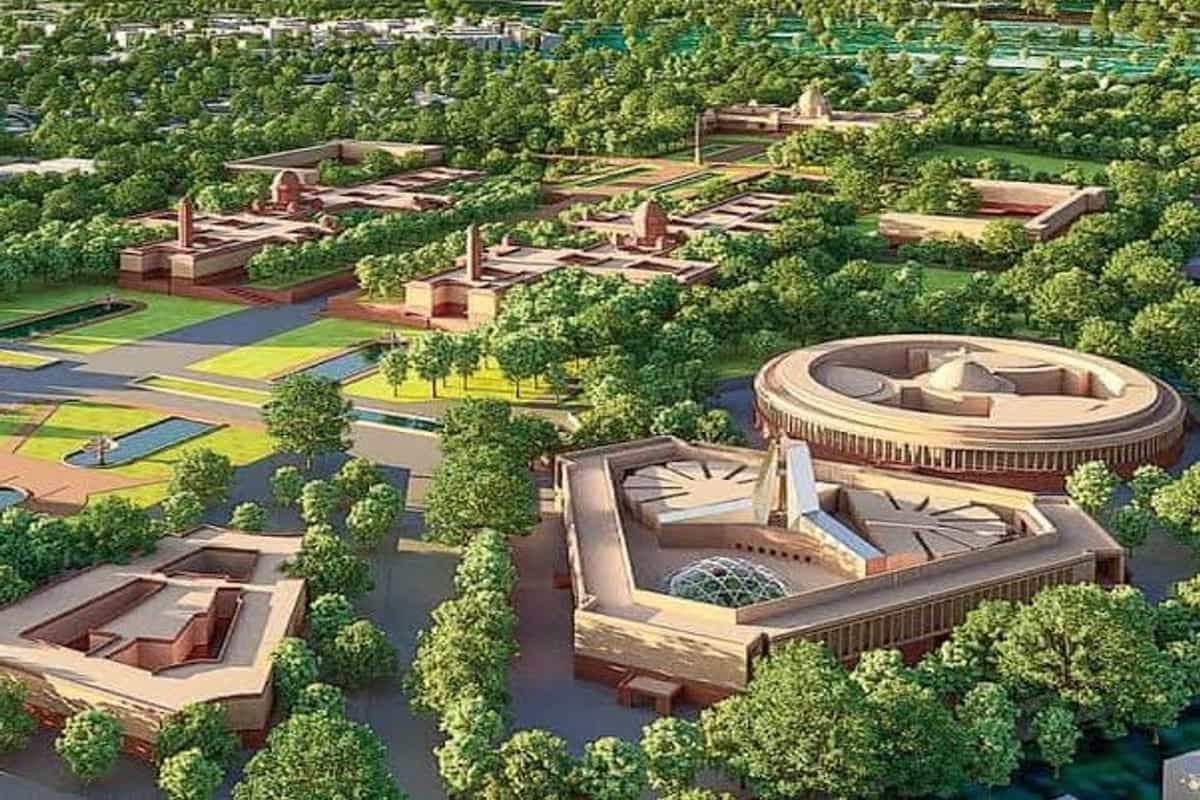Old timers recall how, in the initial years of Indian democracy, lawmakers could simply hop off a public bus (private cars were a luxury for nearly all MPs at that time) in front of the main gate of the Parliament building and walk inside.
Late Atal Bihari Vajpayee once came in a bullock cart in 1973 along with other political leaders to protest against the increase in petrol and kerosene prices.
Eleven years later, the assassination of then PM Indira Gandhi saw the introduction of deep layers of security that has only enhanced over the years as security risks went only northwards.
But during Gandhi’s time, the Parliament complex saw its first expansion since Sir Edward Lutyens and Sir Herbert Baker built the iconic edifice. On October 24, 1975, a not-so-awe-inspiring Parliament House Annexe was added to the estate. The office building was useful as both the scope of work as well as the workforce of the two Houses have increased manifold and there was space constraint.
The circular building of Indian Parliament, built originally to house Central Legislative Assembly and Council of State, has been privy to many historic events. The transfer of power from Britain to India took place within its precincts. Jawaharlal Nehru’s midnight speech was delivered from the Central Hall of Parliament. The Constituent Assembly adopted the Constitution of India in the same Central Hall, shaping lives and destiny of millions of Indians.
The current building took six years for construction at a cost of Rs83 lakh. The Central Legislative Assembly met for the first time in Parliament House on January 19, 1927, marking the beginning of representative rule in India.
During Prime Minister Rajiv Gandhi’s tenure, the plan for another new building—to house Parliament library was conceptualised. On August 15, 1987, Rajiv laid the foundation stone of Parliament Library Building.
But the new building, a few metres less in height than the Parliament building, took quite some time and only during 2002, when Vajpayee was the Prime Minister, the Library Building was inaugurated by the then President KR Narayanan.
Seven years later, as Parliament’s work expanded further, an extension of the annexe was planned. On May 5 2009, the foundation stone of Extension of Parliament House Annexe was laid by Vice- President Mohammad Hamid Ansari and Lok Sabha Speaker Somnath Chatterjee. The extension of the Parliament House Annexe was inaugurated by the Prime Minister Narendra Modi on July 31.
But on Thursday, India will see a giant leap in its parliamentary heritage as foundation stone would be laid by Modi for an altogether new Parliament building. The authorities expect the new building to be completed by 2022, when India will celebrate 75 years of its Independence.
The new building, to be built at a cost of around Rs970 crore, will be triangular in shape with a constitution hall in the middle of the complex.
The state emblem of India– an adaptation of the Lion Capital of Ashoka at Sarnath, is proposed to be placed atop the New Parliament complex.
The triangular complex is also proposed to have six entrances for public use, MPs and for VIPs, including the speaker and the vice president.
The new complex will provide offices for all key functionaries of the Parliament, offices for administrative staff attached to key functionaries, café and dining facilities, Committee Meeting Rooms, VIP lounges, common rooms and a separate ladies’ lounge.
A central courtyard will provide an open meeting space for the members of both Houses along with an adjoining café. There will be museum grade galleries and exhibits which will be accessible to all. The complex is designed to include 120 offices along the periphery of the complex, similar to the current complex. On the third section of the new complex is an open courtyard surrounding the lounge, dining area and the new library. There is a plan to plant a huge banyan tree in the middle of the courtyard.
In addition, a separate chamber for MPs offices is being planned opposite the Parliament complex where central government buildings, the Transport Bhawan and the Shram Shakti Bhawan, are situated. According to officials aware of the development, the two buildings will be razed to build an office complex for more than 700 MPs.





